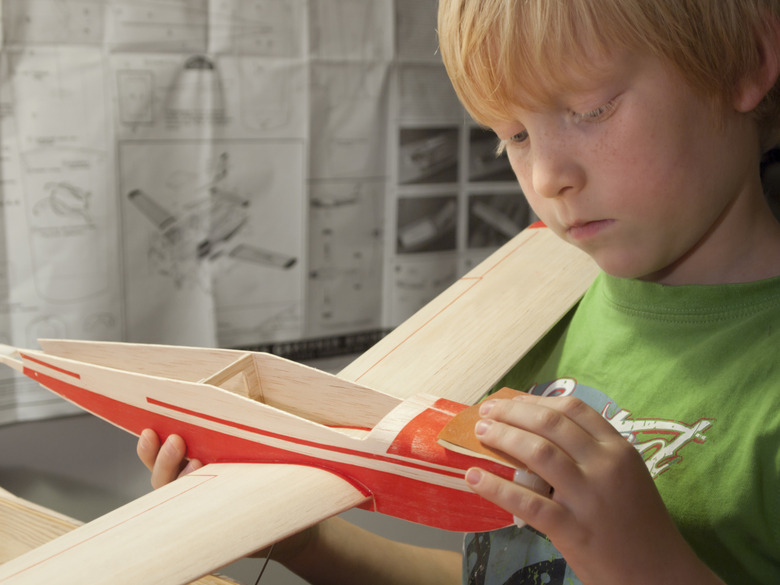Difference Between Basswood And Balsa Wood
Basswood and balsa wood are prized for their light weights, compared with most other commercially available wood varieties. Crafters favor both woods when both weight and workability are important. Balsa is so lightweight it is used to construct model airplanes, bridges and buoys; basswood is a preferred material for woodcarvers, as it is fairly inexpensive and easy to carve compared with many other wood varieties. While both basswood and balsa are at the low end of the Janka hardness scale used to compare wood varieties, they have many traits that differentiate one from another.
Balsa's Best Points
Balsa's Best Points
Balsa wood is so lightweight it may surprise you the first time you pick up a board or slab of the material. It has a high strength-to-weight ratio, making it suitable for structures such as homemade gliders, planes and even racing yachts. This wood is extremely porous, which makes it very receptive to glue. It can be soaked in water to flex and shape it a bit, and it will retain its shape as long as it is clamped or held to the curved form while drying. It is also more available than basswood and inexpensive in comparison.
Balsa Drawbacks
Balsa Drawbacks
The wood's extreme porosity sometimes presents a drawback. Since it is so porous, it absorbs moisture much like a sponge, which changes its weight. Changes in moisture within the wood may cause it to warp; this happens more with unused boards than with project pieces already glued together, since a board has plenty of unused surface area. The density of two pieces of balsa wood compared with one another may not be the same, so consistency may be a concern if purchasing pieces without seeing them first.
Basswood's Benefits
Basswood's Benefits
As a lightweight wood similar to balsa, basswood offers a bit more durability, and is less prone to warping. Since it has very small pores compared with balsa wood, it isn't as prone to absorbing moisture out of the air, so it won't change its shape or density when stored in humid conditions. It is soft enough to carve and is generally consistent in density, texture and strength throughout each piece, making it a top choice for woodcarvers. You can also find it in veneer woods and plywood.
Basswood Drawbacks
Basswood Drawbacks
Basswood bends a bit more than balsa used in similar applications. For instance, if building a model bridge and using long, narrow pieces of wood, the basswood may bow while the balsa retains its shape. Basswood is also slightly more difficult to sand than balsa. If weight is a key concern for a project — for instance, in a building contest involving model rockets, boats or bridges — basswood is heavier than balsa, so a smaller size piece is required compared with balsa wood of the same weight.
